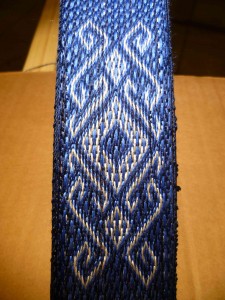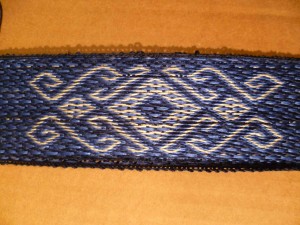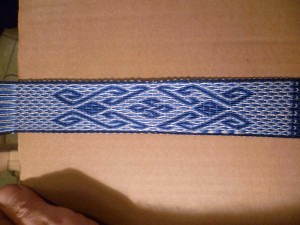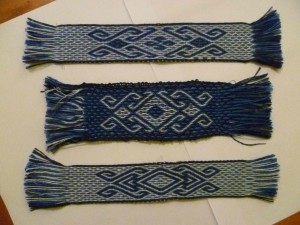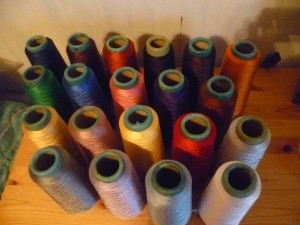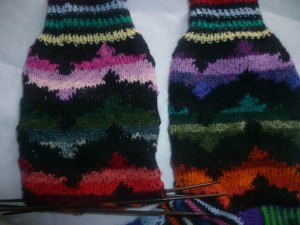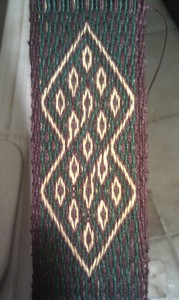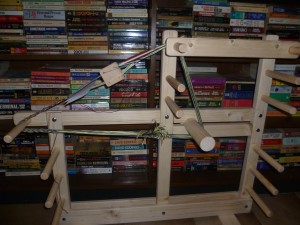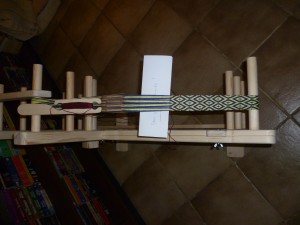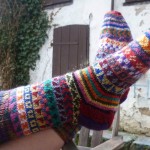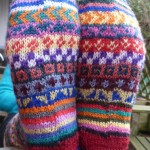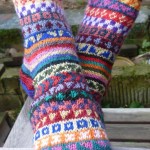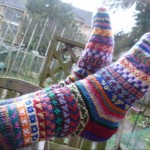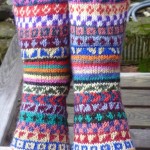I decided to try out my new silk yarn this week. First project will be some bookmarks using Sulawesi technique and more of Guntram’s cool patterns. Since Sulawesi is a 3-color weave I needed to use 3 colors. I chose silver/dark blue/medium blue for this project. I wound just 2 meters of warp so I could play with it and see what it does. Again (like the first time) I had to try all different combinations of S- and Z- threading and (re)orienting the tablets this way and that before I could get the correct pattern to emerge. I think I must have some kind of mental block for this 🙁 Anyway, I finally got one bookmark done using the silver to make the pattern and the 2 blue colors in the background. On the loom it looks like this:
I like the way this came out, but I think it is a bit loose (this allows some of the colors that should be “hidden” to peek through in places). On the next one I’ll try to pull the weft thread to tighten up the weave a bit and see if that helps.
Next I rearranged the tablets and with the same warp, I did another one using the dark blue for the pattern and the other 2 colors as the background. On the loom that one looks like this:
I think I’ve now figured out how to keep the width even as I weave. I hope the next one will be more uniform in width. I’ll post more pictures when I’ve cut them off the loom and finished them.
So far I’m pretty pleased with the material. It is a bit more slippery than the linen I’ve used, which is OK it just takes some getting used to. The material is extremely strong and looks and feels really nice.
UPDATE: 26-Dec-2012
I was able to make only 3 from the warp I had. Here they are (the pictures really don’t do the yarn justice. The yarn is shiny and bright and the colors are wonderful):
